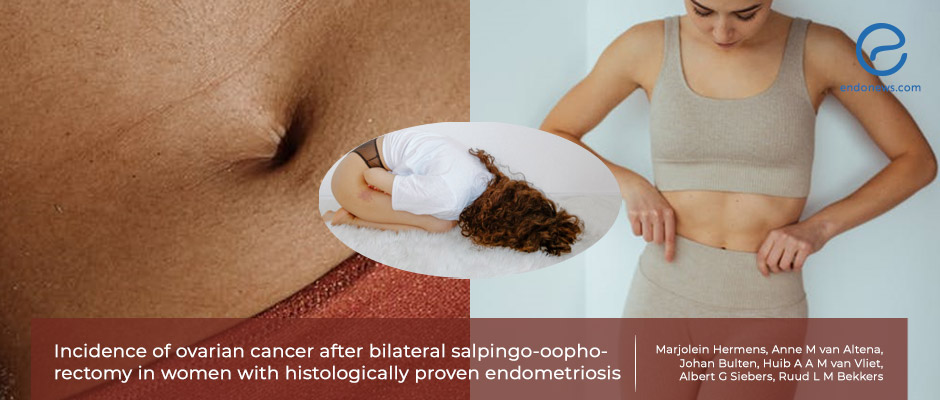Abdominal wall endometriosis is not a rare disease as supposed
May 27, 2022
Abdominal wall endometriosis, defined as implantation of endometrial tissue on the abdominal wall, mostly develops following cesarean section or gynecologic operations.
Key Points
Highlights:
- Women with cyclical pain, mass located on the abdominal wall, and a history of cesarean section or gynecologic procedures should be evaluated for abdominal wall endometriosis.
Importance:
- Clinical suspicion has the most important place in the correct diagnosis and management of abdominal wall endometriosis.
What’s done here?
- This retrospective, observational, descriptive cohort study was conducted to evaluate the demographic and clinical characteristics of the patients with abdominal wall endometriosis.
- Patients who had undergone resection of abdominal wall endometriotic lesions were divided into three groups based on the location and depth of the lesions:
- Type I (only the skin and adipose layer) Type II (also including the fascial rectus abdominis), and Type III (all layers of abdominal wall, muscle, and peritoneum).
- Clinical recurrence was defined as a painful mass on the abdominal wall after surgical removal of previous abdominal wall endometriosis.
- All participants were assessed using abdominal wall ultrasonography to measure the size and depth of the lesions preoperatively.
Key results:
- A total of 367 patients met the eligibility criteria, 50cases (13.62%) were type I, 208 (56.68%) were type II, and 109 cases (29.7%) were type III.
- All patients had similar complaints including abdominal wall mass and pain.
- Higher incidence of previous surgery of abdominal wall endometriosis and greater size were encountered in the Type III group.
- The ratio of multiple lesions was more common in type III patients.
- A total of 110 patients (43.7%) were treated using primary mesh, mostly in Type II and III groups, and the patch placement was more frequent in type III.
- As the size of the lesion increased, the length of hospital stay was significantly longer.
- The 5-year cumulative recurrence rate was comparable between groups with an incidence of 3.3%.
- The depth of invasion of the lesion was found to be directly related to recurrence.
Lay Summary
Abdominal wall endometriosis is an iatrogenic type of endometriosis defined as the localization of endometrial glandular and stromal tissue on the abdominal wall including skin, the rectus abdominis muscle, and rectus muscle sheath. Cyclical pain, mass located on the abdominal wall, and a history of cesarean section or gynecologic procedures represent the classic triad of abdominal wall endometriosis. Surgical removal with negative surgical margins remains the gold standard management while medical treatment is not effective because of the connective tissue around the lesion.
Wu et al., from China, published a study titled “The clinical features and long‑term surgical outcomes of different types of abdominal wall endometriosis” in the journal Archives of Gynecology and Obstetrics.
The authors aimed to assess the demographic and clinical characteristics of the patients with abdominal wall endometriosis such as clinical presentation, nodule size and location, associated pelvic endometriosis, type of surgery performed, and recurrence. They conducted this study on the patients who had undergone an operation for surgical removal of abdominal wall endometriosis and classified the participants into three groups based on the location and depth of the lesions: Type I only including the skin and adipose layer, type II also including the fascial rectus abdominis, type III including all layers of abdominal wall, muscle, and peritoneum.
All parameters were analyzed and compared between the three groups. More advanced age, higher incidence of previous surgery of abdominal wall endometriosis, greater size, and the ratio of multiple lesions were found to be more common in type III abdominal wall endometriosis. The patch placement in surgery was more frequent in type III patients. There was a direct correlation between the lesion size and the length of hospital stay. The 5-year cumulative recurrence rate was comparable between groups with an incidence of 3.3%, and the depth of invasion of the lesion was found to be directly related to recurrence.
“Complete resection of the lesion is critical for preventing recurrent abdominal wall endometriosis.” the authors added.
Research Source: https://pubmed.ncbi.nlm.nih.gov/35482067/
abdominal wall endometriosis clinical characteristics classification recurrence

